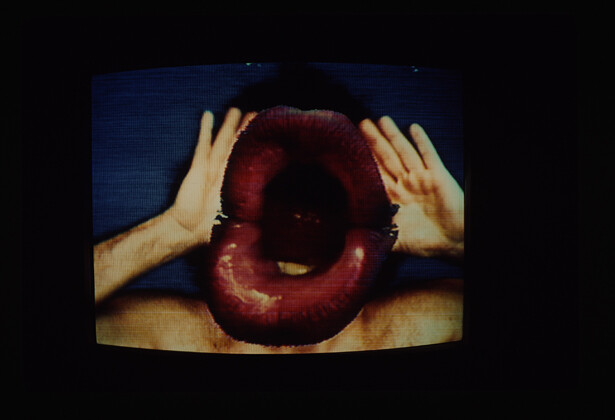February 7–July 12, 2015
Opening: February 7, 5–7pm
Samuel Dorsky Museum of Art
SUNY New Paltz
New Paltz, NY 12561
The Samuel Dorsky Museum of Art at SUNY New Paltz opens Videofreex: The Art of Guerrilla Television, an exhibition that showcases the work of one of the world’s first video collectives on Saturday, February 7, from 5 to 7pm.
Organized by independent curator Andrew Ingall, the exhibition, which includes 22 newly restored videotapes, over 90 photographs and slides, and nearly 80 other objects including drawings, prints, ephemera, publications, and historic audiovisual equipment, surveys the history and mythology of the Videofreex. This collective group of artists, activists, and storytellers, produced and disseminated alternative media in New York City and in other US communities from 1969 to 1978. They ran community educational workshops and presented new work in important museum exhibitions, published articles in Radical Software, and screened tapes at The Museum of Modern Art.
The materials on exhibit, largely borrowed from the personal archives of the Videofreex themselves, display the Videofreex as documenters and broadcasters of counterculture, participants in significant exhibitions of video art, and precursors of a new generation of artists utilizing social media and social practice. Highlights include vintage video interviews with political activists Abbie Hoffman and Fred Hampton, images of feminist and anti-war protests, and humorous programs like The Buckaroo Bart Show and The Lanesville TV Newsbuggy.
Though the Videofreex primarily worked as a collective, individual members created and exhibited video in museums and festivals. Videofreex: The Art of Guerrilla Television includes the remastered and digitized four-channel Quaking Aspens (1972) by Davidson Gigliotti, who was among the first video artists to explore the sculptural qualities of multi-channel installation.
Exhibition overview Videofreex: The Art of Guerrilla Television will include the following sections:
– “Subject to Change,” the legendary CBS television pilot presentation developed by the Videofreex in 1969 that documented the counterculture movement.
– Art Scene and Art Seen features documentation of performances; individual and collective Videofreex work exhibited in nonprofit galleries, museums, and festivals; and activity resulting from an artist residency at WNET’s TV Lab.
– Social and Political Movements features documentation of political events including early Women’s Liberation demonstrations and the 1971 May Day anti-war demonstration in Washington, DC.
– Maple Tree Farm, a base where the Videofreex broadcasted Lanesville TV, offered mobile workshops in upstate New York, and hosted US and international video makers eager to learn, network and collaborate.
– Freex Out, a dynamic workshop/studio space for temporary screenings, as well as live streaming and broadcasting by students, community groups, and guest artists.
About the Videofreex
Videofreex was one of the pioneer production groups that formed when consumer video was first introduced in the late 1960s. Over the nine years as a collective, they produced several thousand videotapes, installations, and multimedia events and trained hundreds of videomakers in the brand new video medium. The core members of the Videofreex, many of whom are active today as artists, journalists, and media makers, include Skip Blumberg, Nancy Cain, David Cort, Bart Friedman, Davidson Gigliotti, Mary Curtis Ratcliff, Parry Teasdale, Carol Vontobel, Ann Woodward, and the late Chuck Kennedy. The Videofreex established their archive at Video Data Bank, Chicago, in 2001, and are the subjects of a forthcoming documentary film by Jenny Raskin and Jon Nealon.
About Andrew Ingall
Andrew Ingall is an independent curator who most recently served as Director of the Lynn and Jules Kroll Fund for Documentary Film at the Foundation for Jewish Culture. He previously worked as Assistant Curator at The Jewish Museum, New York, where he organized exhibitions of video, new media, and film. He has served on selection committees for Documentary Fortnight, The Museum of Modern Art’s annual international showcase of recent non-fiction film and video, and the New York Jewish Film Festival. He is a co-founder, former board member, and staff member of Independent Media Arts Preservation.

